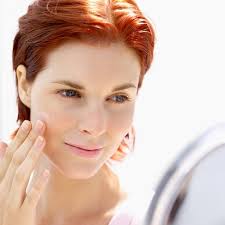March 17th, 2011 by Jeffrey Benabio, M.D. in Opinion
1 Comment »

I recently wrote a paper on social media with some of my colleagues at Kaiser Permanente: Ted Eytan, MD @tedeytan, Rahul Parikh, MD @docrkp, Vince Golla @vincegolla, and Sara Stein, MD @sarasteinmd. In the article, “Social Media and the Health System,” we argue that the benefits of engaging patients and colleagues in social media outweigh potential risks.
The two most common reasons that physicians resist participating on blogs, Twitter and Facebook are: 1. Fear of liability. 2. Lack of compensation for the time invested.
If we would like more physicians to be part of the conversation, then we’ll need to find ways to overcome these barriers.
What has your experience been like interacting with physicians on social media? Is there a place for physicians on sites such as Twitter and Facebook?
For physicians reading this post, you can also join the over 160 others who have commented on this article on Sermo.
*This blog post was originally published at The Dermatology Blog*
March 4th, 2011 by Jeffrey Benabio, M.D. in Health Tips, True Stories
No Comments »

 Hard water is tap water that’s high in minerals such as calcium and magnesium. Hard water isn’t harmful, except the minerals prevent your soap from sudsing. Some people think that hard water is more likely to cause a rash than soft water.
Hard water is tap water that’s high in minerals such as calcium and magnesium. Hard water isn’t harmful, except the minerals prevent your soap from sudsing. Some people think that hard water is more likely to cause a rash than soft water.
Take a recent patient of mine: He moved his family to San Diego from the East Coast (good move this winter, no?) After they moved here, they noticed their skin became dry and itchy. He blamed San Diego’s notoriously hard water and installed a water softener in the main water line. It was costly, but did it improve their skin?
A recent study from the UK looked at this question: Does hard water worsen eczema? The answer was no, it doesn’t. Water hardness did not seem to have any impact on eczema, the most common skin rash.
What’s more important than the hardness of the water is the type of soap you use. True soap tends to strip the skin of its natural oils, leaving it exposed and irritated. Non-soap cleansers, of which Dove is the prototype, leave more oils on your skin, keeping it hydrated and protected.
My patient and his family didn’t get any better after installing a water softener (although he said they could drink our tap water without gagging now.) I advised him to change to a moisturizing soap and to apply moisturizer daily.
San Diego is drier than most of the country, and the low humidity can be a shock to skin accustomed to humid air. Many people who move here find they have to moisturize more often than they did back home. When they complain, I suggest they could alternatively move back to the East Coast this winter — no takers so far.
*This blog post was originally published at The Dermatology Blog*
February 24th, 2011 by Jeffrey Benabio, M.D. in Better Health Network, Health Tips
No Comments »

 Step-by-step skin care? It’s complicated. You have a cabinet full of toners, creams, and serums and you don’t know what goes on when. Using products in the wrong order could mean you’re not getting the most for your money. Here’s a guide to make it easier for you:
Step-by-step skin care? It’s complicated. You have a cabinet full of toners, creams, and serums and you don’t know what goes on when. Using products in the wrong order could mean you’re not getting the most for your money. Here’s a guide to make it easier for you:
1. Toners
Toners are astringents, which means they contract tissue like pores, making your face feel tighter. They often contain alcohols and are used to remove oil from the skin as well as tightening. Therefore, you should use them first. If you have dry or sensitive skin, however, you might skip them completely because they can make dryness worse.
2. Serums
Serums are liquid cosmetics. They usually have antioxidants or peptides to minimize the day’s damage done to your skin and to give you a more youthful appearance. Serums are applied first so that there’s nothing between their expensive ingredients and your skin. The exceptions are serums that contain silicone or dimethicone. Silicone helps lock moisture in your skin, but it also acts as a barrier hindering anything above it from getting to your skin. Silicone serums should be applied last. Like expensive serums, any prescription medications should also be applied first to ensure that their active ingredients penetrate the skin unhindered. If you have both, then apply the prescription first and the serum second.
3. Eye cream and face cream
Face and eye creams can be simple moisturizers or complex anti-aging products. Eye creams usually have antioxidants to help restore this most delicate skin. If you have one, then apply it before your face cream. Otherwise, by applying your face cream first, you risk rubbing it into your eyes. Once your prescription medications (if any) serums, and eye creams have absorbed, then apply your face cream last. If your serum has silicone or dimethicone, then apply it last, so its protective ingredients are the outermost barrier.
*This blog post was originally published at The Dermatology Blog*
February 14th, 2011 by Jeffrey Benabio, M.D. in Better Health Network, Health Tips
No Comments »

 Yoga is good for your mind and body, including your skin. Yoga mats, on the other hand, might not be. Using someone else’s yoga mat for an hour could lead to an infection.
Yoga is good for your mind and body, including your skin. Yoga mats, on the other hand, might not be. Using someone else’s yoga mat for an hour could lead to an infection.
Fungal infections are common and appear as athlete’s foot, toenail fungus, and ringworm. Unfortunately, the fungus can survive on surfaces like mats long after the infected person has left. Although most people blame the gym locker room when they develop athlete’s foot, you can catch the fungus from a variety of places anytime you walk barefoot.
Fortunately, even if the fungus comes into contact with your skin, it doesn’t always lead to infection. Dry, cracked skin, or soft, wet skin disrupt your primary defense against the fungus — the densely packed barrier of skin cells, oils and proteins on your healthy skin’s surface. Here are five ways to prevent taking a fungus home with you from your next yoga class:
1. Bring your own mat. At least you know what you have.
2. Use an alcohol sanitizer on your hands and feet after your class. Sanitizers with at least 60 percent alcohol are excellent at drying up the fungus and killing it long before it has a chance to infect you. Read more »
*This blog post was originally published at The Dermatology Blog*
December 14th, 2010 by Jeffrey Benabio, M.D. in Better Health Network, Health Tips
1 Comment »

Not all skin cancers are from sun exposure. Viruses such as human papilloma virus (HPV), the virus that causes genital warts, also cause skin cancer. Skin cancer from HPV develops on genital skin in both men and women. It’s rarely talked about, but it’s important and can be deadly.
Did you know that half of all deaths from skin cancer other than melanoma are from genital skin cancer? You probably also didn’t know that women are more likely to die from genital skin cancer as they are from skin cancer that developed from sun exposure (again, excluding melanoma).
We dermatologists are inexhaustible when it comes to warning people about the dangers of sun exposure, but we should also be warning people about the dangers of genital warts. HPV protection, which includes HPV vaccines, is as important as sun protection in preventing death from non-melanoma skin cancer.
Genital warts can lead to deadly skin cancer. If your dermatologist has not checked your genital skin, be sure your primary care physician or gynecologist does. This is especially important, because unlike other sexually-transmitted diseases (STDs) which often have symptoms, HPV or genital warts often don’t. It may be embarrassing, but it could save your life.
*This blog post was originally published at The Dermatology Blog*











